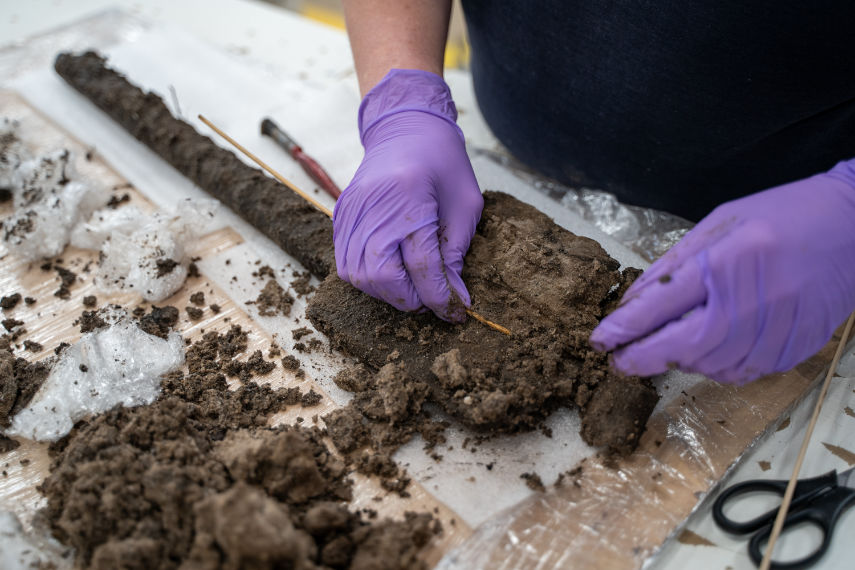History, Poole | Posted on October 23rd, 2024 | return to news
3,000-year-old Bronze Age wooden tool found near Poole
Archaeologists discovered the near-complete wooden spade dating back to the Bronze Age while excavating The Moors at Arne.

Archaeologists have discovered a near-complete wooden spade that was made during the Bronze Age, meaning it is one of the oldest and most complete wooden tools ever found in Britain.
Scientific dating shows the prehistoric spade is around 3,500 years old. It was uncovered while the team from Wessex Archaeology were excavating the site of a new habitat scheme, The Moors at Arne, on the edge of Poole Harbour.
According to the archaeologists, the spade would likely have been a precious tool and a great loss to its prehistoric owner and provides physical evidence of the relationship humans have had with this challenging waterlogged landscape for thousands of years.
However, it is thanks to Dorset’s waterlogged grounds that the spade was able to survive in the ground for over 3,000 years. It is extremely rare for organic material like wood to survive in the earth for so long except in exceptional circumstances.
The spade was made from a single piece of oak, and would have taken hours for a prehistoric person to create.
Ed Treasure, from Wessex Archaeology who led the environmental analysis of the spade, said: “The moment the spade started to be uncovered the team on site knew it was a very special object and now we’re able to analyse it here in the laboratory, we’re starting to reveal its story.
“It’s made of oak and radiocarbon dating of the wood itself confirms it is c.3500-3400 years old, placing it firmly in the Middle Bronze Age. Further scientific dating will shine more light on when the spade was made.
“This is an incredibly exciting moment and we’re looking forward to finding out more as the process unfolds”
Although fragile, the spade offers a rare glimpse into how prehistoric humans worked with Dorset’s landscape in the past. By the Middle Bronze Age, people across the country were settled into rural agricultural lifestyles that we might recognise today, with farmsteads, villages and extensive field systems. However, there is little evidence to suggest that there was a permanent domestic settlement where the spade was uncovered. Instead, archaeologists believe that people were visiting this site seasonally.
Greg Chuter, the Environment Agency archaeologist leading the programme, said: “We’re working across a vast landscape that is dominated by nature with very little to suggest to the naked eye that much human activity has taken place here.
“However, just beneath the surface we’ve uncovered evidence of the ways humans have cleverly adapted to the challenges presented by this particular environment for over 3000 years.
“The spade is a fascinating part of the story and as research continues we’re looking forward to exploring the relationship between the spade and the ditch, and what else they can tell us about life here 3000 years ago.”
Wessex Archaeology have created a detailed, interactive 3D model of the spade which can be viewed online: https://sketchfab.com/3d-models/wooden-spade-from-the-moors-at-arne-bcb15122f0834f49a78a735d0db487ea
To learn more about this fascinating discovery, the archaeology team have also released a short film on YouTube covering the discovery, excavation, stabilisation and analysis of the spade.
Please share post:
LATEST NEWS:
CHARITY OF THE YEAR

Subscribe to the online magazine news letter







